Canadian Food Dishes: Basic Overview
Common Ingredients
Common Cooking Methods
Courses
Meals
Key Taste
Eating Etiquette
Meal Presentation
Culinary Festivals
Influence and Fusion
Popular Types of Canadian Dishes
-
Desserts
In Canadian cuisine, desserts often feature local ingredients.
These sweet finishes are beloved nationwide.
-
Snacks
Snacks are a versatile category that includes both savory and sweet options in Canada.
They offer the country’s eclectic food scene, offering quick, satisfying bites.
-
Bread and Doughs
These dishes are important in Canadian cuisine, featuring varieties with influences of immigrants.
Bread recipes are fundamental to Canadian dining, cherished for their simplicity and the comfort they bring.
-
Casseroles and Bakes
Canadian casseroles and bakes are comfort food at its best, combining layers of flavors and textures into hearty dishes.
Often served during colder months or festive occasions, they showcase the country’s penchant for nurturing.
Canadian dishes are a combination of cooking traditions and practices coming from Canada that offer various regional adaptations. Specialties tend to incorporate local ingredients such as animal meat in stew recipes.
Thanks to abundant immigrants, Canadian dishes are influenced by the culinary treasures of the Caribbean; Central, Southern, and Eastern Europe; South Asia, and East Asia.
Plus, English fare and French gastronomic delights have made their mark in Canadian cuisine, especially in the indigenous customs and local ingredients.
Scroll down and learn about what makes traditional Canadian food special, including its core attributes, global popularity, and healthy aspects. After that, there are 25 well-known Canadian dishes for you to explore.
Through these Canadian dishes, let me take you through the basic information about these specialties along with the components that create them. Also, let’s uncover the drink options that go well with these specialties.
25 Most Popular Canada Dishes with Filters
Keep on reading to discover 25 finger-licking dishes in Canada. Utilize the interactive filters provided to organize the dishes based on alphabetical order, primary ingredients, flavor profile, cooking techniques, types of dishes, meal courses, and worldwide popularity.
Also, you can use my other filters to navigate this content based on traditional, national, and street food options.
Here is a little secret: I have ranked these dishes from the most popular to the least. So keep scrolling, and you will uncover more exotic options.
Poutine
- National
- Traditional
Poutine is a Canadian dish that consists of french fries topped with cheese curds and brown gravy. It originated in Quebec in the late 1950s and became a symbol of Québécois culture.
The French fries dish is widely popular in Canada and has many variations with different toppings and sauces. During the holiday seasons, poutine even takes on special editions like using turkey, stuffing, and cranberry sauce for Thanksgiving.
Poutine is typically served in diners, pubs, fast-food chains, and poutineries, which specialize in this dish.
Tourtière
- National
- Traditional
Tourtière is a savory meat pie in Canada made with different kinds of minced or diced meat, such as pork, beef, veal, game, or fish, and spices.
The name tourtière comes from the vessel in which it was originally cooked, or from the tourte, a type of pigeon that was once used as a filling.
It is a traditional dish of French-Canadian cuisine, especially in Quebec, where tourtière is often served during the Christmas and New Year’s Eve celebrations.
This Canadian meat pie has different regional variations, coming from Saguenay-Lac-Saint-Jean, Eastern Quebec, Manitoba, and Acadia.
Peameal Bacon
- National
- Traditional
Peameal bacon, some refer to as Canadian bacon, is made from lean pork loin cured in a salt and sugar brine and coated with cornmeal. It is not smoked and has a tender and juicy texture and a mild flavor.
Nowadays, this traditional bacon is brined and wrapped in cornmeal. However, in the past, peameal bacon was wrapped in ground yellow peas to improve its shelf life, which is the origin of the name “peameal”.
This unique bacon is mainly found in Ontario, where it is a signature dish of Toronto’s St. Lawrence Market. Peameal bacon is often served as a sandwich on a Kaiser roll with mustard or other condiments for breakfast or dinner.
Montreal-Style Smoked Meat
- National
- Traditional
Montreal’s smoked meat is a Canadian meat creation made from beef brisket that has been cured and marinated for a week with lots of spices before being smoked and steamed.
This meat goes well as a fancy topping for poutine or a filling for a rye bread sandwich. In Canadian Jewish communities, this smoked meat is a popular pick for adding to dishes.
Soupe Aux Pois
- National
- Traditional
Soupe aux pois is a Canadian version of split pea soup, consisting of yellow peas, either whole or split, that are cooked with salt pork and herbs until soft and thick.
The warm soup is a traditional dish of Quebec during the winter or on special occasions. It has a rich and savory flavor and a creamy texture, which sometimes goes great with Johnny cake, a type of cornbread.
Lobster Rolls
- Traditional
Lobster rolls are a Canadian and American dish of lobster meat served on a grilled hot dog-style bun. They originated in New England and Atlantic Canada, where lobster is abundant and a delicacy.
These meaty rolls are a popular summer treat and a tourist attraction, especially in Maine and Nova Scotia. They are often served with potato chips or french fries and dill pickles.
Fèves Au Lard
- National
- Traditional
Fèves au lard is a dish in Canada with beans and pieces of pork fatback as the main ingredients for slow-cooking in earthenware. The delicacy also comes with maple syrup or molasses and spices to enhance the profile.
The dish is heavily influenced by the baked beans dish from Boston. It is also known as bines or haricots au lard.
Fèves au lard is usually served as a side dish during breakfast or at sugar shacks during the maple syrup season.
Cretons
- National
- Traditional
Cretons, also known as gorton or corton, is a pork spread with onions and spices popular in Quebec cuisine. This forcemeat-style spread was formerly quite popular among French Canadian forest workers.
As part of a traditional Quebec breakfast, cretons are frequently served on toast or multigrain bread. It has a delicious, fatty flavor that reminds people of French rillettes.
Besides pork, people also make this dish with veal or poultry, in which case it’s called cretonnade.
Oreilles De Crisse
- National
- Traditional
Oreilles de crisse is a Canadian specialty of smoked pork rinds or jowls that are deep-fried until crispy and golden. It is a dish popularly consumed in the spring when the maple sap is harvested.
Oreilles de crisse is usually served in sugar shacks, where it is eaten with maple syrup or other condiments. The name oreilles de crisse means “ears of Christ”, originating from a legend that a chef at a logging camp made fun of a fighter named Christ who had a swollen ear.
Pâté Chinois
- National
- Traditional
Pâté chinois is a French-Canadian dish similar to the English shepherd’s pie or the French hachis Parmentier.
Jean-Pierre Lemasson, the author of Le mystère insondable du pâté chinois, stated that pâté chinois made its first appearance on the tables of Quebecois households in the 1930s.
This wonderful pie is considered a staple in Acadian and Québécois cuisines, packed with pickled eggs, beets, and even ketchup.
Sugar Pie
- National
- Traditional
Sugar cake is a type of dessert cake of the French and Belgian cuisines. The treat is also widely enjoyed in Canada, especially in Quebec, where it is often made with maple syrup.
The sweet cake has a simple but delicious filling of sugar, cream, butter, and sometimes vanilla, which creates a smooth and creamy texture and a sweet but not overpowering flavor.
The filling is baked in a pie crust, which can be either leavened or unleavened.
Nanaimo Bars
- National
- Traditional
Nanaimo bars are a dessert named after the city of Nanaimo featuring a triple -layered dessert square made from nut wafer, yellow custard icing, and chocolate ganache on top.
The dessert was believed to have originated from a 1952 cookbook called The Women’s Auxiliary to the Nanaimo General Hospital. At that time, it was just called “chocolate square”.
Up until 1653, another cookbook was released with the recipe for this dessert using the name “Nanaimo bar”. Canadians even voted Nanaimo bar as Canada’s Favorite Confection in a National Post survey.
Butter Tarts
- National
- Traditional
Butter tarts are a staple treat of Canada made with a simple mix of sugar, egg, butter, and sometimes currants.
Created during the 1900s, the earliest recipe found for butter tart is in the Royal Victoria Cook Book by Margaret MacLeod.
Butter tarts can be enjoyed during home meals or in picnics, or they can be found in bakeries all over Canada, with recipes and textures varying differently.
The most famous place to get these treats is the Butter Tart Trail, a street with 18 bakeries making and selling the nation’s favorite dessert.
Saskatoon Berry Pie
- National
- Traditional
Saskatoon berry pie is a culinary creation utilizing Saskatoon berry, a fruit in Canada that is named for an entire city, Saskatoon, Saskatchewan. The name of this type of berry comes from the Cree word “misâskwatômina”, which also means berry.
The pie possesses a sweet and nutty taste from the Saskatoon berries in the filling. As for the fruit filling, it has a vibrant gooey center encased by a golden crispy crust.
Pouding Chômeur
- National
- Traditional
Pouding chômeur, also known as “unemployment pudding” or “poor man’s pudding”, was invented during the Great Depression. When the event happened, the cake part was made using stale bread.
It is a fulfilling dessert covered in hot maple syrup. When baked, the sugar syrup settles on the bottom of the cake, forming a delicious sauce.
In saison des sucres (the sugar season), pouding chômeur is popular among the Canadian population.
Timbits
- National
- Street Food
Timbits are fried dough balls created by Tim Horton in 1976, and since then, this dessert has become a must-have for both visitors and citizens.
These sweet delicacies come in various flavors such as old-fashioned, powdered sugar, chocolate, or honey.
Flapper Pie
- National
- Traditional
Flapper pie is a traditional meringue-topped vanilla custard pie in Canada. This tasty pie was known as Graham cracker cream pie in the 19th century, but the name changed to flapper pie in the 20th.
People top this dessert with whipped cream instead of meringue in South Saskatchewan.
Bannockân
- Traditional
Bannock is a baked bread that was brought to Canada by Scottish fur traders. The bread is known by various names throughout Indigenous Nations, starting with the name bannuc, an Old English word that means “morsel”.
The unleavened bread can stay fresh for an extended period, providing a great accompaniment with jam, honey, or plain butter.
Depending on the region, people create bannock with different ingredients to bring new twists to the bread in terms of flavors and textures.
Montreal-Style Bagels
- National
- Traditional
Montreal’s bagels are ringbread with a denser, thinner, and a bit sweeter than their New York counterparts. This bagel is usually baked in a wood-fired oven with the customers being able to observe the process of its creation at bakeries.
Before banking, these bagels are coated with a bit of honey to enhance the sweetness. In terms of varieties, the ones coated with white or black sesame seeds are two popular picks.
BeaverTails
- National
- Street Food
The BeaverTails, a fried dough pastry that resembles a real beaver tail, is one of the most iconic desserts in Canada.
This traditional pastry was invented by Grant and Pam Hooker. They first sold this pastry at the Killaloe Craft and Community Fair in 1978, and it eventually blew up.
This fried pastry also comes with additional toppings, such as chocolate spread, banana sliced, cinnamon, or powdered sugar.
Maple Taffy
- National
- Traditional
Maple taffy is a traditional Canadian dessert of boiled maple sap, offering a thick and sticky texture. The mixture is then poured on snow to form candy.
Also known as tire d’érable in French, or sugar on snow in some parts of the United States, Maple taffy is usually eaten with a wooden stick and sometimes served with other foods such as donuts, pickles, and coffee.
Maple taffy is a popular treat during winter festivals, especially in Quebec, where it is part of the culture and cuisine of the sugar shack. The sweet offering can come from different types of maple trees, such as the Manitoba maple, which gives it a darker and mustier flavor.
Ketchup Chips
- National
- Traditional
Ketchup chips are a type of Canadian potato chip flavored with ketchup-like seasonings, such as tomato powder, garlic, onion, and spices.
They are a Canadian specialty created in the 1970s when Hostess Potato Chips experimented with different chip varieties and found success with ketchup chips.
These crunchy chips have a sweet and sour taste similar to barbecue, but not exactly like ketchup. They are a popular snack food in Canada, available widely in most grocery stores.
Touton
- National
- Traditional
Touton is a traditional Newfoundland dish in Canada that usually involves frying or baking bread dough with or without pork fat. The bread also goes by other names, such as tiffin, touten, or damper dogs, depending on the region.
Touton is typically served for breakfast or brunch, with molasses, butter, or other toppings. In Newfoundland, the bread has been featured in novels, musicals, and cooking shows.
Ploye
- National
- Traditional
Ploye is a type of Canadian flatbread of the Brayon people, who are French Acadians living in the Madawaska region of New Brunswick and Maine. This flatbread was first invented in Nova Scotia but later spread to other areas.
People usually cook ploye on one side only and then topped with butter, maple syrup, molasses, brown sugar, or cretons, which are a type of pork spread. The topped bread can be eaten as a snack, a breakfast, or a side dish with fricot, a chicken stew with dumplings.
Pâté Au Saumon
- National
- Traditional
Pâté au saumon is a pie in Canada filled with salmon and mashed potatoes. It is a traditional dish from Quebec, where it is also known as tourtière au saumon.
ân
Surprisingly, the pie is usually made with leftover bread dough or pastry, and baked in the oven until golden and crispy. It is a hearty and comforting dish for serving with molasses, ketchup, or salad.
List of Canadian Dishes
How to Pair Canadian Dishes with Drinks?
Canadian dishes are only one side of the country’s cuisine, as drink pairings are a great way to enhance your dining experience:
Ice Wine
Canada, particularly Ontario, is renowned for its ice wine, a sweet dessert wine made from grapes frozen on the vine. Ice wine is a perfect match for desserts like butter tarts or maple syrup-infused dishes, offering a balance to their sweetness.
Canadian Whisky
Smooth and often slightly sweet, Canadian whisky pairs well with smoky flavors. Try it with a plate of poutine, where its smoothness complements the savory gravy, or alongside a hearty meat pie like tourtière.
Craft Beer
Canada’s craft beer scene is diverse, with offerings ranging from light pilsners to robust stouts. A crisp lager or pale ale pairs nicely with seafood dishes like lobster rolls.
Darker beers, such as porters or stouts, are excellent with richer dishes like smoked brisket or wild game.
Cider
With apple orchards aplenty, Canadian ciders range from sweet to dry. A dry cider is refreshing with a savory apple and pork dish. Sweeter ciders can enhance the flavors of desserts or contrast with the saltiness of dishes like peameal bacon sandwiches.
Maple Syrup-infused Cocktails
Maple syrup is not just for pancakes. In cocktails, it adds a Canadian twist to classics. A maple Old Fashioned or a maple whisky sour pairs beautifully with desserts like pecan pie or with savory, salty dishes like bacon-wrapped dates, balancing the sweetness with their saltiness.
In case you enjoy going through these dishes, please give them a big thumbs up and share them with your friends and family. Have a fantastic day, and I’ll see you next time!



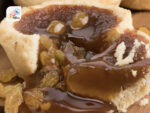


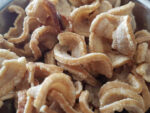



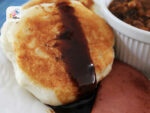
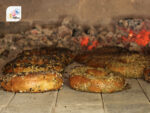





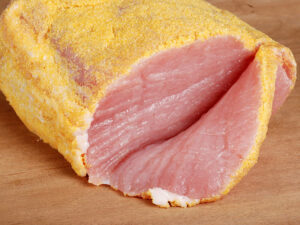
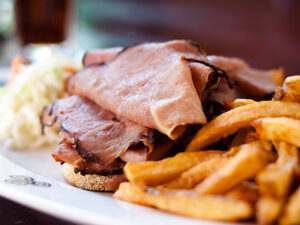
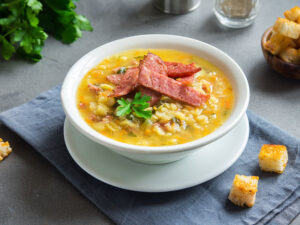
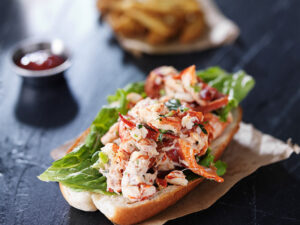
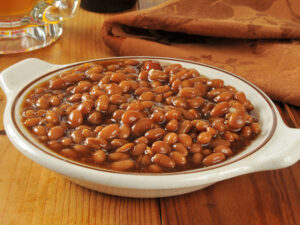
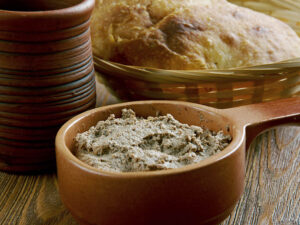
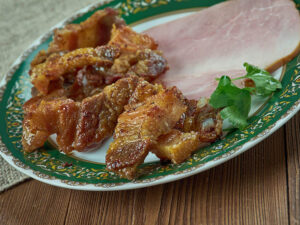
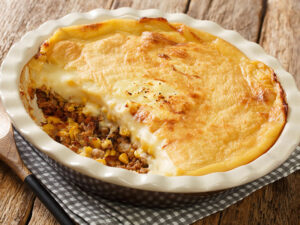




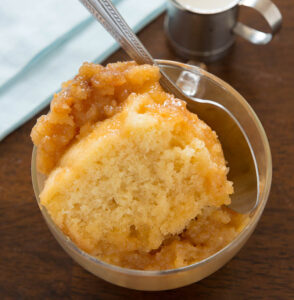
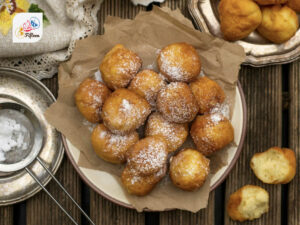

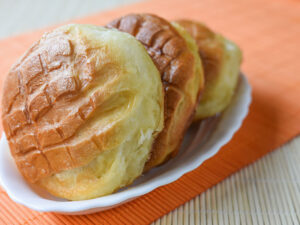

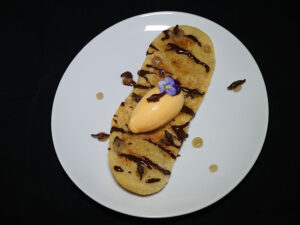
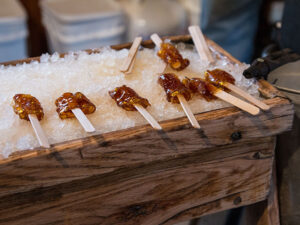
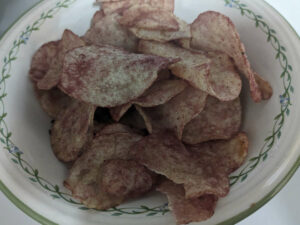

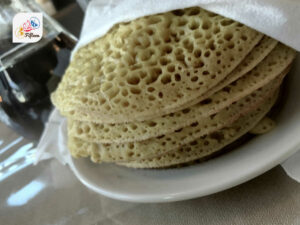

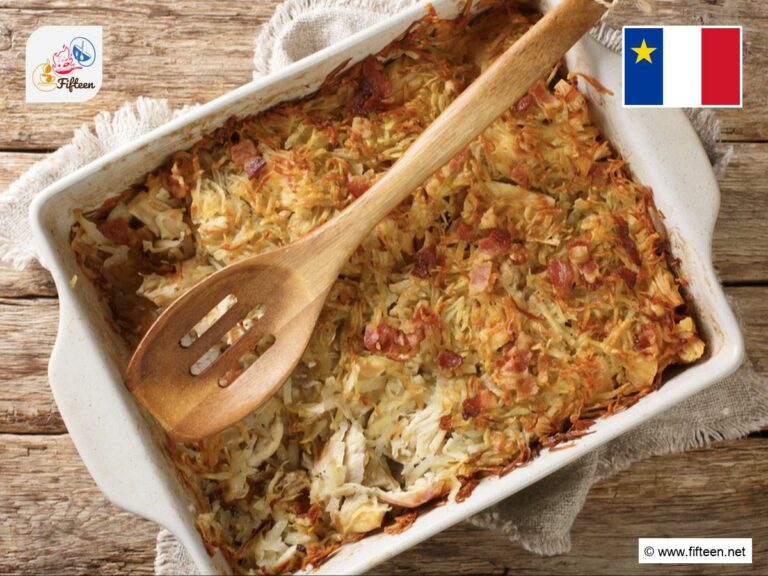

Jamie Scott
Editor in Chief, Senior Content Writer
Expertise
Home Cooking, Meal Planning, Recipe Development, Baking and Pastry, Food Editor, Cooking-video Maker, Western Food Evaluation Expert
Education
Le Cordon Bleu College of Culinary Arts
Local Community College, New York, NY
Jamie Scott is a skilled culinary expert and content creator specializing in Western cuisine. With over 15 years in the culinary field and formal training from Le Cordon Bleu, Paris, Jamie deeply understands how to blend nutrition with delicious flavors. His passion for cooking matches his commitment to making healthy eating accessible and enjoyable.
On Fifteen.net, Jamie brings a fresh perspective to classic dishes and beverages, offering readers insightful recipes, cooking tips, and a fresh view on meal planning that emphasizes taste, health, and simplicity.